13 Japanese Maples for Shade
Everyone loves Japanese maples (Acer palmatum cvs, USDA zones 5 to 8; find your zone). Their color and structure are unrivaled, while their size makes them accessible to those whose gardens are measured in square feet instead of acres. Images of brilliant reds and vibrant oranges arise when we think of Japanese maples. Herein lies the problem with siting these trees in gardens clothed in shade.
The hard truth is that the maples with the beautiful red and orange foliage need more than half a day of sun to sustain that colorful foliage. The good news is that there are many stellar cultivars that do just fine in a shade garden, with partial sun to light or dappled shade. What these green and variegated cultivars lack in brightly colored foliage, they more than make up for in texture and structure. Let’s take a look at some of the best.
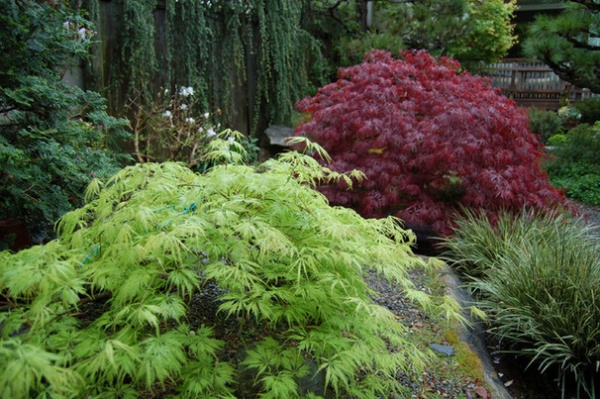
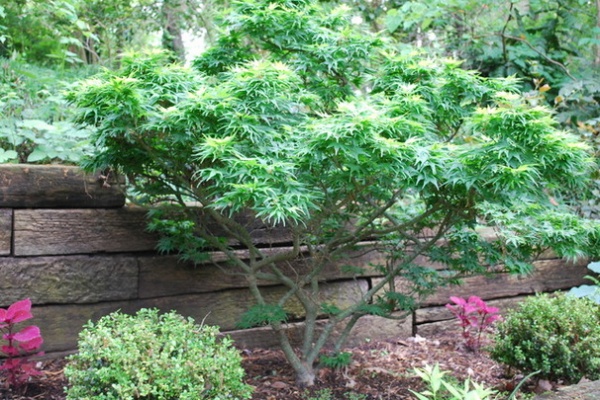
‘Mikawa Yatsubusa’. This small maple is considered by bonsai experts to be one of the top three cultivars in regard to shape and branching. The leaves are slightly larger than those of other small Japanese maples, emerging bright green before changing to a fresh medium green for the summer. The fall color is a yellow-orange. The leaves grow in clumps and are slightly shingled atop one another.
Since Mikawa Yatsubusa grows slowly to 5 feet in height, it makes an excellent choice for container planting.
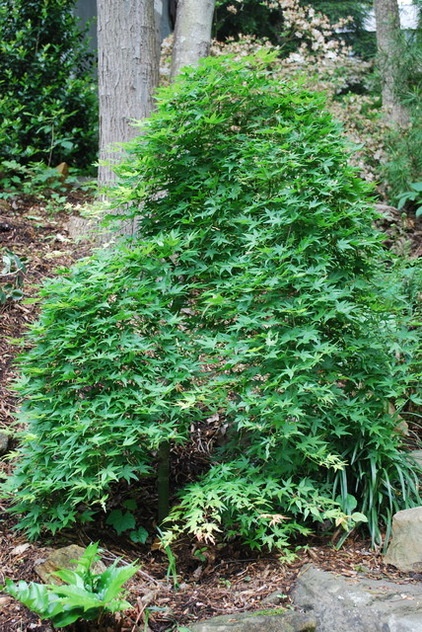
‘Ryusen’. This is one of the few truly weeping Japanese maples. Its name translates as “dragon spirit,” Its green leaves are arranged in an upright fashion on long branches that frequently run along the ground. For this reason, Ryusen is a perfect choice for planting above a retaining wall or hanging over a pond. This tree reaches an average height of 6 feet.
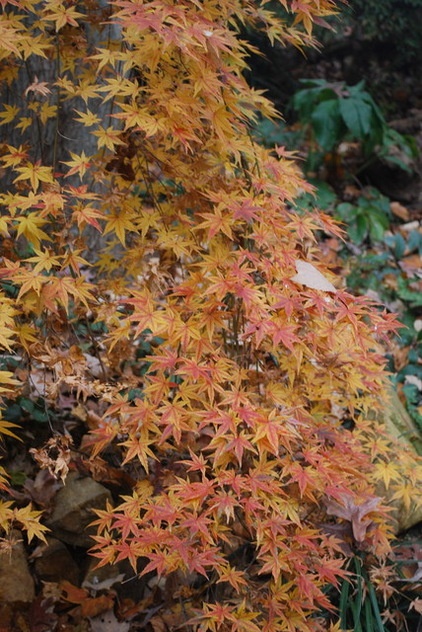
Ryusen’s foliage puts on a beautiful show in fall, changing to a bright yellow-orange. This fall coloration is typical of most of the green-leaved Japanese maples.
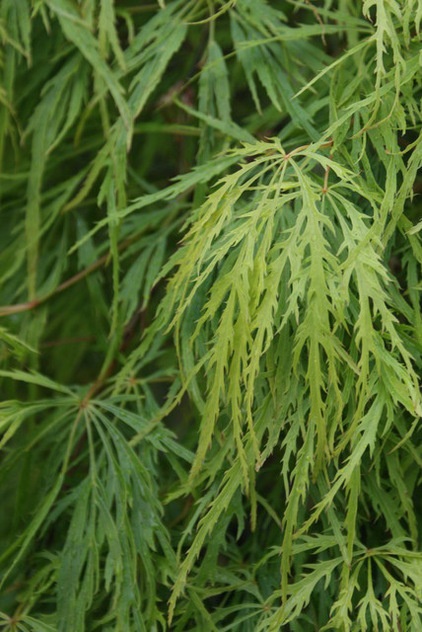
‘Waterfall’. This maple is aptly named, as its mounding, cascading shape resembles that of a waterfall. Its bright, light green foliage is delicate in appearance and abundantly covers the tree. Waterfall grows to a height and width of 6 to 10 feet. Its fall coloration is yellow to orange.
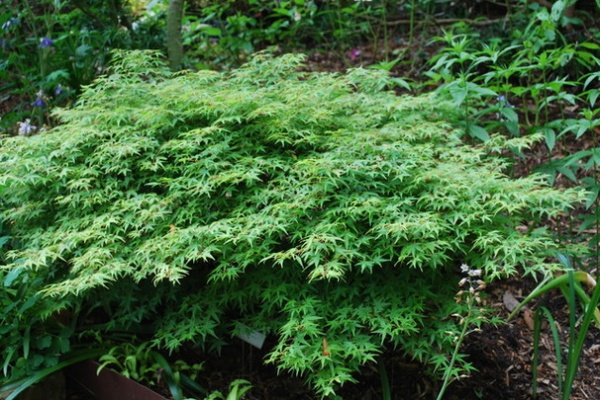
‘Murasaki Kiyohime’. This maple is globe shaped and short in habit, frequently growing wider than taller. In spring its green leaves sport a dark purple margin.
I enjoy planting Murasaki Kiyohime underneath an upright Japanese maple, such as Shishigashira. The juxtaposition is notable.
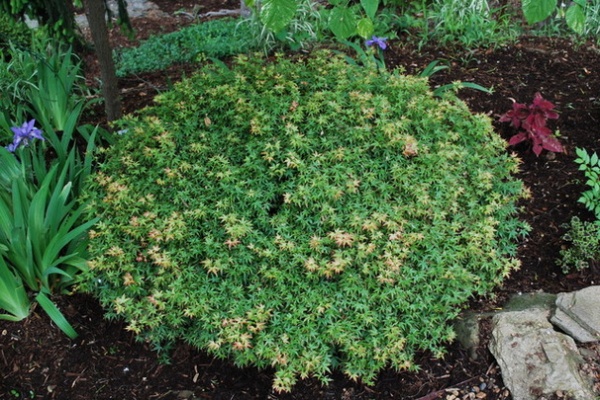
‘Kiyohime’. This dwarf maple is similar to Murasaki Kiyohime but has a denser, tighter habit. It can be pruned in fall or winter to accentuate this habit and is a prime candidate for bonsai. Placing Kiyohime in close proximity to similarly shaped boulders creates interest and juxtaposition in the garden.
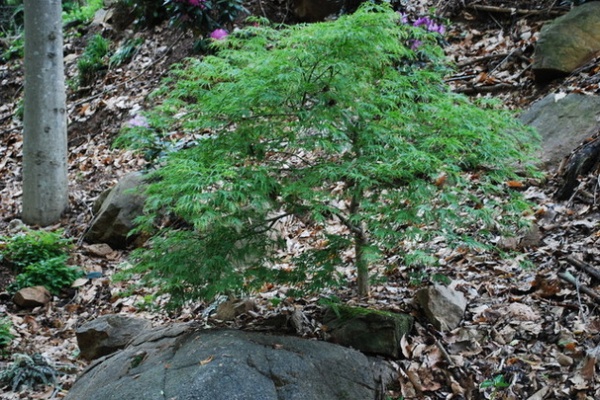
‘Viridis’. This Japanese maple is one of my all-time favorites. Its classic form and lacy foliage resemble those of ‘Crimson Queen’, the mounding red Japanese maple that immediately comes to mind when you think of these trees. Viridis reaches 5 feet tall and wide in 10 years and sports yellow foliage in autumn.
When the tree reaches its 10-year size, proper pruning can be done to accentuate its structure.
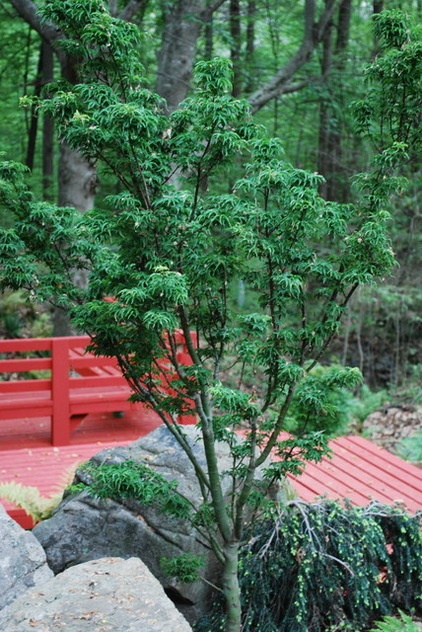
‘Shishigashira’. We have looked at mounding, cascading and weeping Japanese maples that do well in partial or light shade. Two classic upright cultivars are worth considering, the first of which is Shishigashira, a small upright tree with an outstanding structure that reaches a height of 15 feet.
Shishigashira has the richest heritage of any Japanese maple cultivar. It is named after a mythical lioness in Japanese drama and is commonly known as the lion’s head Japanese maple. Its clumping, curled foliage habit, along with its rich golden yellow autumn foliage color, has earned it this nickname.
I enjoy planting one of the dwarf globe-shaped maples, such as Kiyohime, underneath it for contrast.
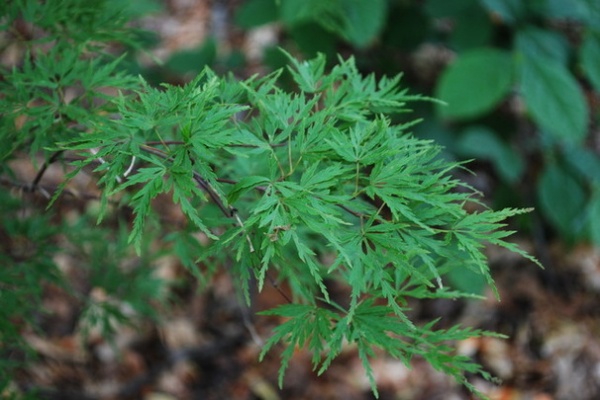
‘Seiryu’. This maple is unlike any other, unique in that it sports a highly dissected (lacy) leaf on an upright tree. The other cultivars with dissected leaves are mounding or weeping in form. This shade-tolerant tree grows to a height of 15 feet and sports typical golden orange foliage in autumn.
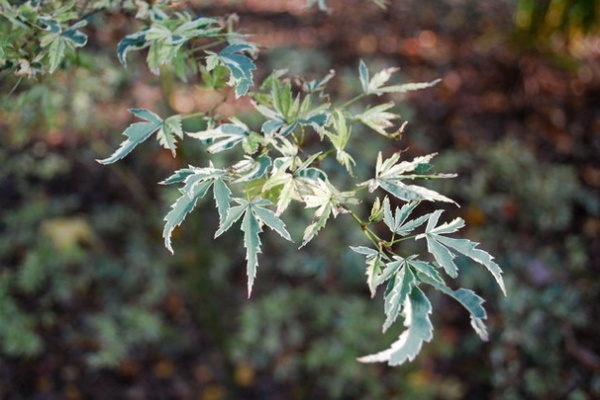
‘Butterfly’. Butterfly is probably the best-known white-on-green variegated Japanese maple in the trade. It is a tree with dense foliage and a green trunk. Butterfly is a slow-growing cultivar, reaching a height of 9 feet tall.
Because its foliage is primarily white, it can easily get scorched in sunny locations, which makes it a perfect candidate for shade. Its light color brightens up a shady corner of the garden. Butterfly occasionally sends out new shoots clad with green foliage. These are best pruned away in fall or winter to preserve the integrity of the tree.
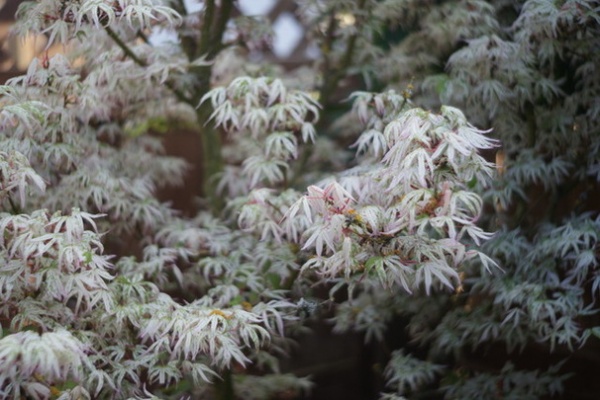
‘Ukigumo’. This Japanese maple is commonly known as floating clouds, due to the large amount of white in its foliage and its horizontal branching habit. It is a small, nonmounding maple, reaching a height of 10 feet and a width of 8 feet.
Like Butterfly, it will get scorched when planted in too much sun, so plant it in a site with light shade or morning sun with afternoon shade.
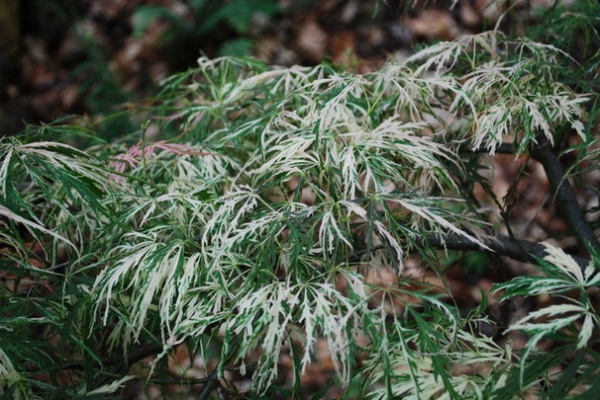
‘Toyama Nishiki’. This small maple begins the season with white foliage tinged with pink and green. The white and green variegation holds well through the summer. This maple is mounding in habit and grows to a height of 6 feet.
Placing it in a lightly shaded area will prevent leaf scorch in the warmer months.
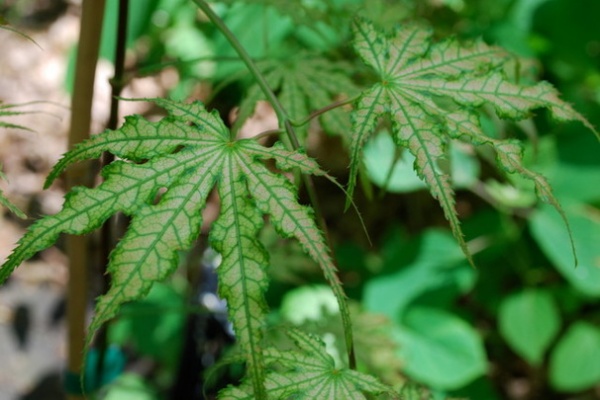
‘Peaches and Cream’. This cultivar is typical of the newer line of bred offerings that concentrate on subtle variegation with pronounced veining in the foliage. Its fall coloration is a diffused but rich red to orange. Peaches and Cream reaches a height of 10 feet and a width of 8 feet.
Because the variegation is subtle, be sure to place it close to a pathway where its sublime beauty can be easily noticed.
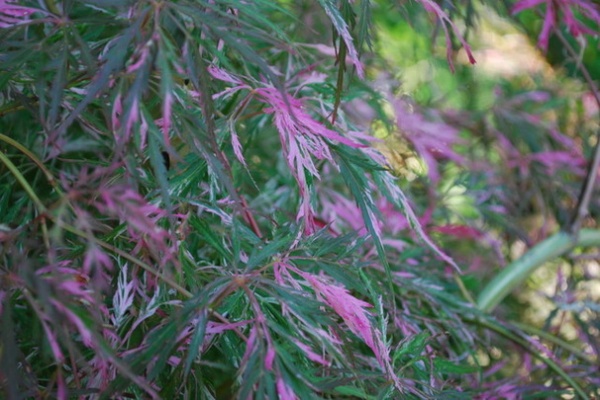
‘Hana Matoi’. This cultivar gets noticed more than any other Japanese maple in my garden. Its rich tricolor variegation of bright pink, white and green is unique. The spring coloration holds fairly well through the summer. The fall coloration is red to orange. Hana Matoi is a very small, mounding tree on its own, with a height of perhaps 3 feet and a width of 6 feet. It is generally grafted onto a higher standard, with a typical 10-year height closer to 6 feet.
The pink and white variegation make it susceptible to scorching in a sunny location, so light shade is preferable.
More:
Pretty Trees for Patios, Paths and Other Tight Spots
How to Design a Beautiful Shade Garden












